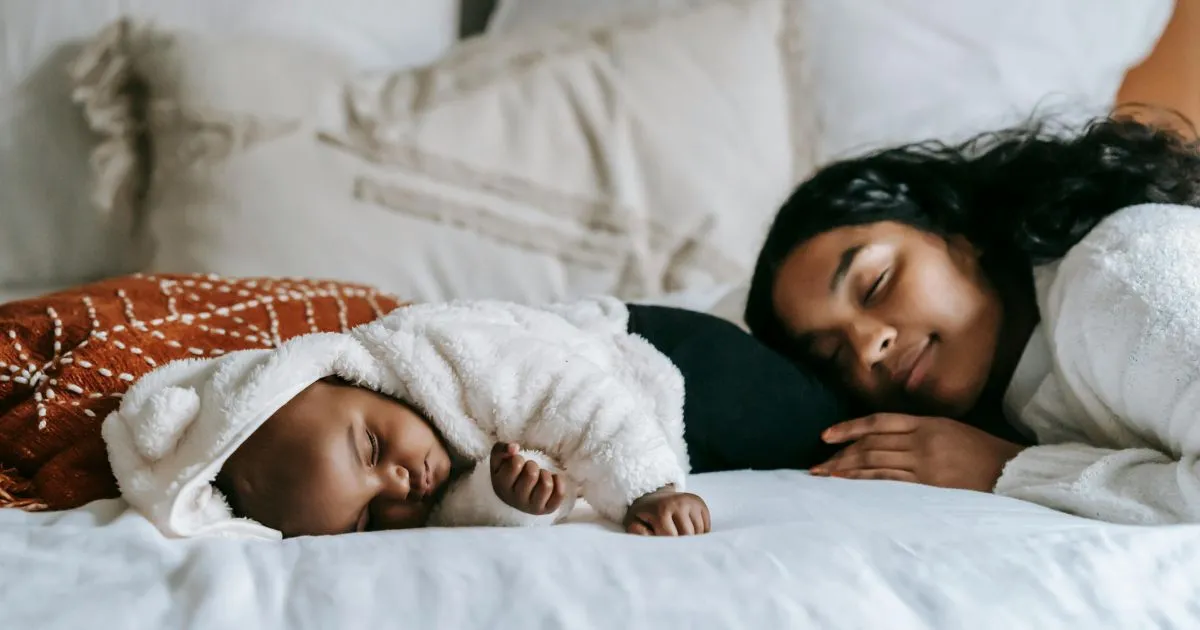When it comes to your infant’s sleep, safety is always the top priority. As a parent or caregiver, you may have heard conflicting information about the best sleep positions for babies. One position that often sparks debate is infant sleeping on side. While some may believe it’s a comfortable sleeping posture, there are important safety considerations to keep in mind. In this guide, we’ll explore the risks and benefits associated with side sleeping for infants, provide safety tips, and answer your most pressing questions to ensure your baby sleeps soundly and safely.
Table of Contents
Understanding the Risks of Infant Sleeping on Side
While infant sleeping on side might appear to be a cozy alternative to lying on the back or stomach, experts consistently warn against it. Research shows that side sleeping poses several risks for babies, especially in their early months of development. Here’s why side sleeping is not recommended:
1. Increased Risk of Sudden Infant Death Syndrome (SIDS)
One of the primary concerns with infant sleeping on side is the potential risk of Sudden Infant Death Syndrome (SIDS). Babies who sleep on their side are more likely to roll onto their stomachs during the night, which significantly increases the risk of suffocation. Studies show that sleeping on the stomach is a leading cause of SIDS, and side sleeping could lead to this dangerous situation.
2. Risk of Spinal Misalignment
Babies are still developing their muscles and bones, which means their spine is particularly delicate. Side sleeping can place unnecessary pressure on their developing spinal column, potentially leading to discomfort or even long-term issues. Babies are designed to sleep on their backs, which ensures that their spine remains in a neutral position.
3. Possibility of Choking or Aspiration
Infants have a natural reflex that causes them to turn their heads when they are sleeping on their back or side. However, this reflex is not fully developed in the early months. This makes babies more susceptible to choking or aspiration when sleeping on their side, as they might have difficulty keeping their airway clear.
What the Experts Recommend: Back Sleeping is Best
The American Academy of Pediatrics (AAP) and other child health organizations strongly recommend back sleeping for infants as the safest sleep position. Babies who are placed on their back to sleep have a significantly lower risk of SIDS, and this position is considered the best for their overall health and development.
Why Back Sleeping Works
When babies are placed on their back, their chances of rolling into a dangerous position—such as the stomach or side—are minimized. The back sleeping position also allows babies to maintain an open airway, reducing the risk of choking. Additionally, back sleeping promotes healthy spinal alignment and supports the development of muscles needed for milestones like sitting, crawling, and walking.
Safety Tips for Parents: How to Ensure Safe Sleep for Your Infant
Now that we’ve established the importance of back sleeping, here are some key safety tips to ensure that your baby sleeps safely, no matter what position they prefer:
1. Always Place Your Baby on Their Back to Sleep
Regardless of whether your baby seems to prefer sleeping on their side or stomach, always place them on their back when it’s time for bed. This position significantly reduces the risk of SIDS and ensures that your baby’s airways remain clear throughout the night.
2. Use a Firm Mattress in a Safety-Approved Crib
Make sure your baby sleeps on a firm mattress in a crib that meets safety standards. Soft bedding, pillows, or stuffed animals can create a suffocation hazard. Instead, opt for a tight-fitting sheet and keep the crib free of loose items. This minimizes the risk of entanglement or the baby rolling into a dangerous position.
3. Avoid Bed-Sharing
While it may be tempting to bring your baby into bed with you, bed-sharing is not recommended. Babies can accidentally get trapped between the mattress and the headboard, pillows, or blankets, increasing the risk of suffocation. Always place your baby in their own crib or bassinet to sleep.
4. Create a Safe Sleep Environment
Ensure your baby’s sleep environment is calm, cool, and dark. White noise machines can help soothe your baby and block out disruptive sounds. Additionally, maintaining a cool room temperature (between 68–72°F or 20–22°C) helps prevent overheating, another risk factor for SIDS.

5. Keep Your Baby’s Tummy Time Consistent
While side sleeping is not recommended, tummy time is essential for your baby’s development. Ensure that your baby gets plenty of supervised tummy time while they are awake. This helps strengthen the muscles in their neck, shoulders, and back, which will help with later motor skills like crawling.
6. Monitor Your Baby’s Sleep Patterns
Using a baby monitor can help you keep track of your baby’s sleep patterns. Look for signs of discomfort, and make sure they are always sleeping on their back. If you’re concerned about your baby’s sleep behavior, consult your pediatrician for further advice.
Common Myths About Infant Side Sleeping: Debunked
There are several myths about infant sleeping on side, which can cause confusion among parents. Let’s take a look at some of the most common misconceptions and set the record straight.
Myth #1: Side Sleeping Helps Prevent Flat Head Syndrome (Positional Plagiocephaly)
It’s true that babies who spend too much time lying on their backs may develop flat spots on their heads. However, side sleeping is not the solution. The best way to prevent flat head syndrome is by ensuring that your baby has supervised tummy time and that they alternate positions during the day. Back sleeping does not cause flat head syndrome when tummy time is properly incorporated.
Myth #2: Side Sleeping is More Comfortable for Babies
While side sleeping might look comfortable, it’s actually not ideal for your baby’s development. Babies are born with underdeveloped muscles, and sleeping on their side can increase the likelihood of spinal misalignment. Back sleeping ensures that your baby’s spine is properly aligned, supporting their overall health.
Myth #3: Babies Naturally Roll into the Side Sleeping Position
Some believe that babies naturally roll onto their side during sleep, but this is not the case for most newborns. Infants lack the coordination to roll on their own during the early months. Therefore, it’s up to caregivers to place babies on their back for sleep and avoid the side sleeping position altogether.
FAQ: Infant Sleeping on Side
Is it safe for an infant to sleep on their side?
No, side sleeping is not recommended due to the increased risk of rolling onto the stomach, which increases the chances of suffocation. Back sleeping is considered the safest sleep position for infants.
What is the safest sleeping position for my baby?
The safest sleeping position for your baby is back sleeping. This reduces the risk of SIDS, ensures an open airway, and supports healthy spinal alignment.
How can I prevent flat head syndrome?
To prevent flat head syndrome, make sure your baby gets plenty of supervised tummy time while awake. This helps strengthen neck muscles and allows for better head positioning during sleep.
Can my baby sleep on their side once they can roll over?
Once your baby can roll over on their own (typically between 4–6 months), they may shift positions during sleep. At this point, it’s generally considered safe, but you should continue to place them on their back at the start of sleep.
Are there any alternatives to side sleeping for comfort?
Yes, if your baby seems uncomfortable on their back, try using a swaddle or sleep sack to provide a sense of security. You can also consider different types of mattresses or sleep surfaces that support your baby’s comfort while maintaining safety.
Prioritizing Safe Sleep for Your Baby
Ensuring your baby sleeps safely is one of the most important steps you can take as a parent or caregiver. While infant sleeping on side might seem like a tempting choice, the risks simply outweigh any potential benefits. Back sleeping is the safest option, reducing the risk of SIDS and promoting healthy spinal development. By following the safety tips outlined above, you can rest assured that your baby is sleeping in the best possible position for their health and well-being.
